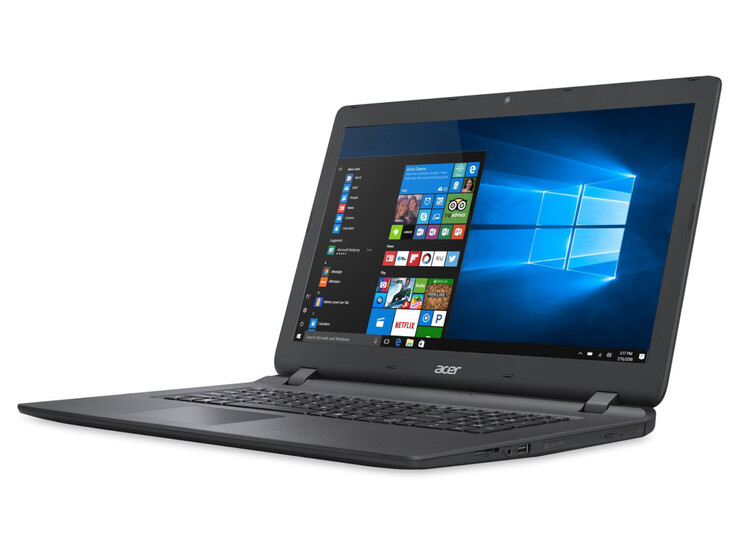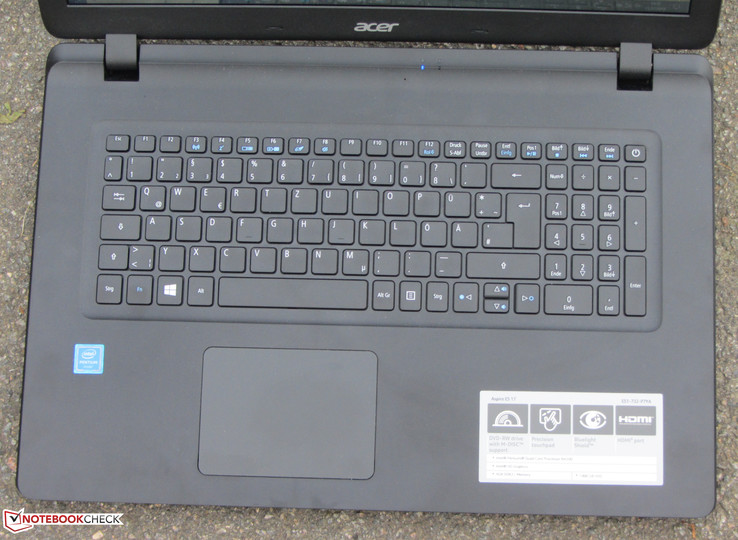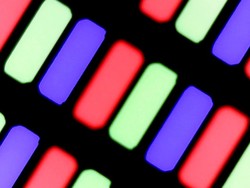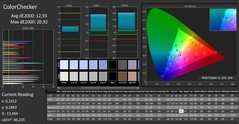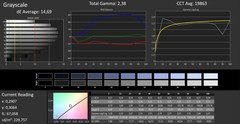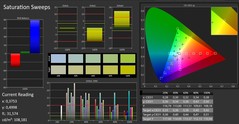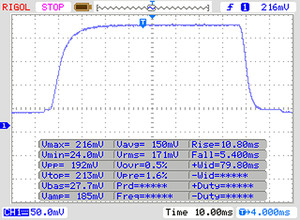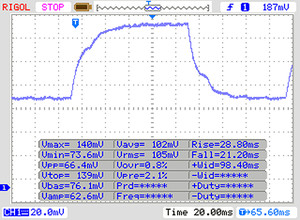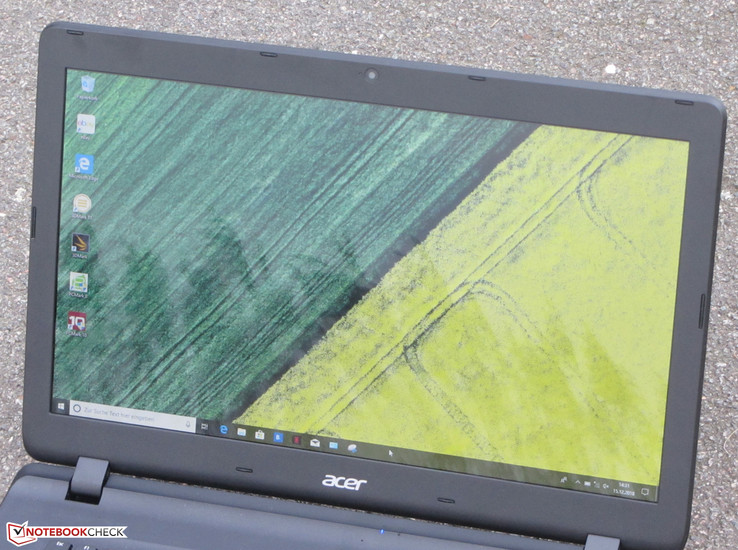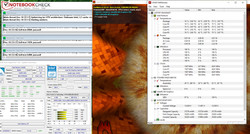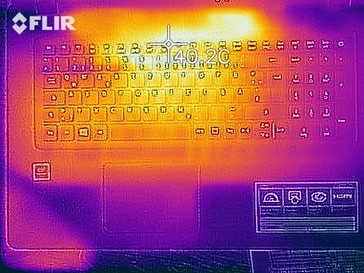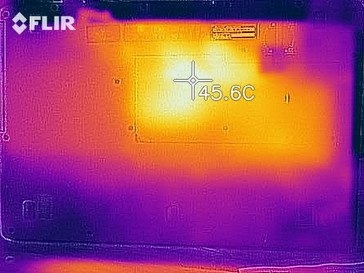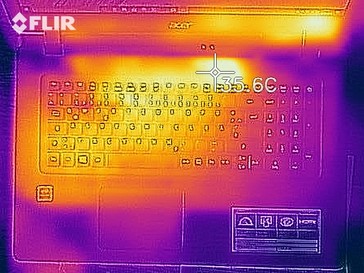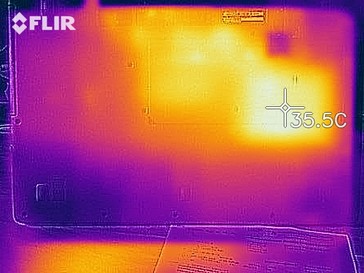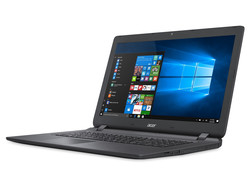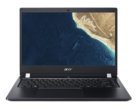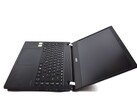Acer Aspire ES 17 ES1-732 (N4200, 1 TB HDD, HD+) Laptop Review

The Acer Aspire ES 17 ES1-732 succeeds the Aspire ES1-731, which we reviewed in early 2016. The two devices look similar, but Acer has replaced the Braswell processor that it used in the ES1-731 for a more powerful Apollo Lake CPU, while the company has also made the ES1-732 around 200 g lighter than its predecessor.
We have chosen to compare the Aspire ES 17 ES1-732 against other similarly priced 17.3-inch laptops. Our comparison devices include the ASUS VivoBook X751BP, the HP 17 and the Lenovo IdeaPad 320-17AST. We will be assessing the ES1-732 against the ASUS VivoBook 17 X705UA too, which is comparably priced but is powered by a more powerful Intel Core i3-7100U processor.
Case & Connectivity
Acer has made the Aspire ES1-732 entirely from matte black plastic with there being no premium material in sight. The display lid and top case both have a swirly textured finish, the inclusion of which appears to be a stylistic decision rather than a practical one.
Our test device is well-built, with there being no uneven gaps between materials or processing defects. Acer could have made the ES1-732 sturdier in our opinion though. The battery is firmly installed, but the company has included a maintenance cover, behind which sit the SO-DIMM RAM slot and the HDD. The inclusion of a maintenance cover is useful because it provides easy access to components without having to take off the entire bottom case, which can be a lengthy and sometimes awkward process.
The ES1-732 has a typical selection of ports for a large budget laptop. Acer has equipped the device with three USB Type-A ports, two of which are USB 2.0 with the third being USB 3.1 Gen 1. Moreover, there is an HDMI port for connecting the ES1-732 to an external monitor and a full-sized SD card reader, from which SD cards protrude by around 15 mm.
Our test device averaged less than 30 MB/s in both our SD card reader tests with our Toshiba Exceria Pro SDXC 64 GB UHS-II reference card. These transfer speeds put it on par with our comparison devices, but they are all around 60% slower than the class average.
Acer has equipped the ES1-732 with an Intel Dual Band Wireless-AC 3168 Wi-Fi module, which supports modern Wi-Fi standards up to IEEE 802.11 ac. Our test device can connect to either 2.4 GHz or 5 GHz Wi-Fi networks and achieved respectable transfer speeds in our iperf3 Client Wi-Fi tests. The ES1-732 averaged around 280 Mb/s in both tests, which puts it way behind the Lenovo IdeaPad 320-17AST, but well ahead of the ASUS VivoBook X751BP with its Qualcomm Atheros modem.
Please note: We conduct our Wi-Fi tests with no other Wi-Fi connected devices nearby and with our test device next to our test router. These are optimal conditions, so your experience may vary with the Wi-Fi performance of your ES1-732.
Connectivity
| SD Card Reader | |
| average JPG Copy Test (av. of 3 runs) | |
| Average of class Office (22.4 - 198.5, n=28, last 2 years) | |
| Lenovo Ideapad 320-17AST-80XW0013GE (Toshiba Exceria Pro SDXC 64 GB UHS-II) | |
| Asus VivoBook 17 X705UA-BX022T (Toshiba Exceria Pro SDXC 64 GB UHS-II) | |
| Acer Aspire ES1-732-P7YA (Toshiba Exceria Pro SDXC 64 GB UHS-II) | |
| HP 17-x066ng (Toshiba Exceria Pro SDXC 64 GB UHS-II) | |
| Asus VivoBook X751BP-TY048T (Toshiba Exceria Pro SDXC 64 GB UHS-II) | |
| maximum AS SSD Seq Read Test (1GB) | |
| Average of class Office (25 - 249, n=26, last 2 years) | |
| Asus VivoBook 17 X705UA-BX022T (Toshiba Exceria Pro SDXC 64 GB UHS-II) | |
| Lenovo Ideapad 320-17AST-80XW0013GE (Toshiba Exceria Pro SDXC 64 GB UHS-II) | |
| HP 17-x066ng (Toshiba Exceria Pro SDXC 64 GB UHS-II) | |
| Acer Aspire ES1-732-P7YA (Toshiba Exceria Pro SDXC 64 GB UHS-II) | |
| Networking | |
| iperf3 transmit AX12 | |
| Lenovo Ideapad 320-17AST-80XW0013GE | |
| Asus VivoBook 17 X705UA-BX022T | |
| Acer Aspire ES1-732-P7YA | |
| HP 17-x066ng | |
| Asus VivoBook X751BP-TY048T | |
| iperf3 receive AX12 | |
| Asus VivoBook 17 X705UA-BX022T | |
| Lenovo Ideapad 320-17AST-80XW0013GE | |
| Acer Aspire ES1-732-P7YA | |
| HP 17-x066ng | |
| Asus VivoBook X751BP-TY048T | |
Input Devices
Keyboard
The ES1-732 has an unlit chiclet keyboard and number pad. The keys are flat with a roughened texture and all have a medium stroke to them while retaining a clear pressure point. The right-hand side of the keyboard deck gives way slightly while typing, but not annoyingly so. Overall, Acer has equipped the ES1-732 with a decent keyboard that is good enough for daily use.
Trackpad
There is also a multi-touch trackpad that measures 10.6 x 7.8 cm. The trackpad sits below the space bar and has a smooth finish that makes it easy to perform multi-finger gestures. Moreover, the trackpad has a short stroke and a clear pressure point when depressed, while the surface is responsive even at its corners, which is not a given for budget laptops.
Display
The ES1-732 has a 17.3-inch display that operates at a 1600x900 native resolution. Our test device achieves an average maximum brightness of 208.7 cd/m² according to X-Rite i1Pro 2, which is unimpressive but on par with many of our comparison devices. The display is bright enough for using the ES1-732 inside buildings or under artificial lights, but the HP 17 would be easy to read under bright lights thanks to its higher maximum luminosity.
However, our test device has a 0.15 cd/m² black value, which is surprisingly low and results in an impressive 1,513:1 contrast ratio. Our comparison devices cannot match the ES1-732 in this regard, with only the HP 17 achieving a contrast ratio higher than 1,000:1. Unfortunately, our test device uses pulse-width modulation (PWM) to regulate its display brightness, which could cause eye strain and headaches for some people who are PWM sensitive. The display in our test device flickers at 961 Hz across the entire brightness range, which should be high enough not to cause issues for most people; we cannot guarantee this though.
| |||||||||||||||||||||||||
Brightness Distribution: 80 %
Center on Battery: 232 cd/m²
Contrast: 1513:1 (Black: 0.15 cd/m²)
ΔE ColorChecker Calman: 12.93 | ∀{0.5-29.43 Ø4.78}
ΔE Greyscale Calman: 14.69 | ∀{0.09-98 Ø5}
80% sRGB (Argyll 1.6.3 3D)
51% AdobeRGB 1998 (Argyll 1.6.3 3D)
54.9% AdobeRGB 1998 (Argyll 3D)
80.1% sRGB (Argyll 3D)
53.5% Display P3 (Argyll 3D)
Gamma: 2.38
CCT: 19863 K
| Acer Aspire ES1-732-P7YA TN LED, 1600x900, 17.3" | Asus VivoBook 17 X705UA-BX022T TN LED, 1600x900, 17.3" | Lenovo Ideapad 320-17AST-80XW0013GE TN LED, 1600x900, 17.3" | HP 17-x066ng IPS, 1920x1080, 17.3" | Asus VivoBook X751BP-TY048T TN LED, 1600x900, 17.3" | |
|---|---|---|---|---|---|
| Display | -5% | -6% | 14% | 4% | |
| Display P3 Coverage (%) | 53.5 | 51.2 -4% | 50.5 -6% | 63.6 19% | 55.5 4% |
| sRGB Coverage (%) | 80.1 | 75.2 -6% | 73.3 -8% | 86.5 8% | 81.9 2% |
| AdobeRGB 1998 Coverage (%) | 54.9 | 52.9 -4% | 52.1 -5% | 63.3 15% | 57.4 5% |
| Response Times | 15% | -8% | -26% | 2% | |
| Response Time Grey 50% / Grey 80% * (ms) | 49 ? | 41 ? 16% | 40 ? 18% | 38 ? 22% | 47 ? 4% |
| Response Time Black / White * (ms) | 15 ? | 13 ? 13% | 20 ? -33% | 26 ? -73% | 15 ? -0% |
| PWM Frequency (Hz) | 961 | 200 ? | |||
| Screen | -33% | -34% | 15% | -2% | |
| Brightness middle (cd/m²) | 227 | 237 4% | 205 -10% | 331 46% | 266 17% |
| Brightness (cd/m²) | 209 | 216 3% | 209 0% | 310 48% | 259 24% |
| Brightness Distribution (%) | 80 | 82 3% | 81 1% | 87 9% | 83 4% |
| Black Level * (cd/m²) | 0.15 | 0.58 -287% | 0.55 -267% | 0.33 -120% | 0.45 -200% |
| Contrast (:1) | 1513 | 409 -73% | 373 -75% | 1003 -34% | 591 -61% |
| Colorchecker dE 2000 * | 12.93 | 10.78 17% | 11.26 13% | 4.58 65% | 4.53 65% |
| Colorchecker dE 2000 max. * | 20.92 | 19.24 8% | 19.86 5% | 7.83 63% | 7.2 66% |
| Greyscale dE 2000 * | 14.69 | 13.38 9% | 13.85 6% | 6.18 58% | 5.48 63% |
| Gamma | 2.38 92% | 2.51 88% | 2.48 89% | 2.34 94% | 2.23 99% |
| CCT | 19863 33% | 15051 43% | 15307 42% | 6076 107% | 7726 84% |
| Color Space (Percent of AdobeRGB 1998) (%) | 51 | 49 -4% | 47 -8% | 56 10% | 53 4% |
| Color Space (Percent of sRGB) (%) | 80 | 75 -6% | 73 -9% | 86 8% | 82 3% |
| Total Average (Program / Settings) | -8% /
-21% | -16% /
-25% | 1% /
10% | 1% /
0% |
* ... smaller is better
Screen Flickering / PWM (Pulse-Width Modulation)
| Screen flickering / PWM detected | 961 Hz | ||
The display backlight flickers at 961 Hz (worst case, e.g., utilizing PWM) . The frequency of 961 Hz is quite high, so most users sensitive to PWM should not notice any flickering. In comparison: 53 % of all tested devices do not use PWM to dim the display. If PWM was detected, an average of 8108 (minimum: 5 - maximum: 343500) Hz was measured. | |||
Our test device has a comparatively colour inaccurate display out of the box with a DeltaE ColorChecker deviation of 12.93, which is much higher than the ideal value of 3. The display suffers from a blue tint too, which we noticed when running CalMAN analysis software. By contrast, the HP 17 and VivoBook X751BP both have DeltaE ColorChecker deviations of less than 5, which is much closer to the ideal value.
Display Response Times
| ↔ Response Time Black to White | ||
|---|---|---|
| 15 ms ... rise ↗ and fall ↘ combined | ↗ 10 ms rise | |
| ↘ 5 ms fall | ||
| The screen shows good response rates in our tests, but may be too slow for competitive gamers. In comparison, all tested devices range from 0.1 (minimum) to 240 (maximum) ms. » 35 % of all devices are better. This means that the measured response time is better than the average of all tested devices (20.2 ms). | ||
| ↔ Response Time 50% Grey to 80% Grey | ||
| 49 ms ... rise ↗ and fall ↘ combined | ↗ 28 ms rise | |
| ↘ 21 ms fall | ||
| The screen shows slow response rates in our tests and will be unsatisfactory for gamers. In comparison, all tested devices range from 0.165 (minimum) to 636 (maximum) ms. » 84 % of all devices are better. This means that the measured response time is worse than the average of all tested devices (31.6 ms). | ||
Acer has equipped the ES1-732 with a TN panel, which has poor viewing angles. Moreover, the display is generally too dark for using the device outside, but it is readable on overcast days. The display’s glossy finish will attract reflections regardless of the weather though.
Performance
The ES1-732 is powerful enough for Office and Internet applications, but resource-intensive programs will overwhelm it. Acer currently sells the same configuration as our test device for around 400 Euros (~$457), but there are numerous other variants too should you want a different processor or HDD, for example.
Processor
Our test device is equipped with an Intel Pentium N4200 processor, which is a quad-core CPU based on Intel’s Apollo Lake architecture. The N4200 has a 1.1 GHz base clock speed that can increase up to 2.5 GHz when required. Moreover, the CPU has a 6 W maximum TDP, which is low enough for the processor to be cooled passively. Acer has equipped the ES1-732 with a fan though to ensure that the CPU does not overheat.
Unfortunately, our test device cannot maintain peak CPU performance when it is subjected to sustained load. The N4200 operates at 2.4 GHz for the first few sections of a Cinebench R15 multithreaded benchmark, after which the clock speed then drops to 2.1/2.2 GHz. Our test device experienced no thermal throttling in a looped multi-core Cinebench R15 benchmark though, the behaviour of which is replicated by our comparison devices.
By contrast, the CPU ran consistently at 2.4/2.5 GHz in the corresponding single-core benchmark. Our test device performs just as well on battery as it does on mains power too.
| Geekbench 3 | |
| 32 Bit Multi-Core Score | |
| Average Intel Pentium N4200 (4425 - 4736, n=6) | |
| Acer Aspire ES1-732-P7YA | |
| Lenovo Ideapad 320-17AST-80XW0013GE | |
| 32 Bit Single-Core Score | |
| Lenovo Ideapad 320-17AST-80XW0013GE | |
| Average Intel Pentium N4200 (1362 - 1430, n=6) | |
| Acer Aspire ES1-732-P7YA | |
| JetStream 1.1 - Total Score | |
| Asus VivoBook X751BP-TY048T (EDGE: 40.15063.674.0) | |
| Asus VivoBook 17 X705UA-BX022T | |
| Lenovo Ideapad 320-17AST-80XW0013GE (Edge 40) | |
| Average Intel Pentium N4200 (56.4 - 91.5, n=14) | |
| Acer Aspire ES1-732-P7YA (Edge 44) | |
System Performance
The ES1-732 generally performed above average for a Pentium N4200-powered device in PCMark benchmarks. Our test device works smoothly in daily use, but the HDD may make the system feel sluggish compared to those that run from SSDs. Acer does sell the ES1-732 with an SSD should you prefer faster system performance over storage space. You could also swap out the HDD for an SSD and re-install Windows 10 on the new drive if you like to tinker with your devices.
We would have expected the ES1-732 to get the most from its processor given the limited performance of the N4200. However, Acer has equipped the device with only one SO-DIMM RAM module that restricts the system to running in single-channel mode, which limits performance. Unfortunately, there is only one SO-DIMM slot, so there is no way to activate dual-channel mode and improve performance.
| PCMark 8 Home Score Accelerated v2 | 2052 points | |
| PCMark 8 Creative Score Accelerated v2 | 2344 points | |
| PCMark 8 Work Score Accelerated v2 | 2717 points | |
| PCMark 10 Score | 1361 points | |
Help | ||
Storage Devices
Acer has equipped our test device with a Toshiba MQ01ABD100 2.5-inch HDD. The 1 TB drive operates at 5,400 RPM and performs on par with other 5,400 RPM HDDs, although it achieved around 8% slower transfer speeds in CrystalDiskMark 3.0 than the average of devices that we have already tested with the same HDD.
| Acer Aspire ES1-732-P7YA Toshiba MQ01ABD100 | Asus VivoBook 17 X705UA-BX022T Seagate Mobile HDD 1TB ST1000LM035 | Lenovo Ideapad 320-17AST-80XW0013GE Seagate Mobile HDD 1TB ST1000LM035 | HP 17-x066ng WDC WD10JPVX-08JC3T5 | Asus VivoBook X751BP-TY048T Seagate Mobile HDD 1TB ST1000LM035 | Average Toshiba MQ01ABD100 | Average of class Office | |
|---|---|---|---|---|---|---|---|
| CrystalDiskMark 3.0 | -10% | 4% | 4% | -10% | -9% | 16433% | |
| Write 4k QD32 (MB/s) | 0.96 | 0.479 -50% | 0.154 -84% | 0.959 0% | 0.305 -68% | 0.861 ? -10% | 370 ? 38442% |
| Read 4k QD32 (MB/s) | 0.858 | 0.709 -17% | 1.088 27% | 1.039 21% | 1.074 25% | 0.783 ? -9% | 463 ? 53863% |
| Write 4k (MB/s) | 0.952 | 0.602 -37% | 0.316 -67% | 0.96 1% | 0.009 -99% | 0.877 ? -8% | 114.1 ? 11885% |
| Read 4k (MB/s) | 0.441 | 0.399 -10% | 0.448 2% | 0.395 -10% | 0.461 5% | 0.3942 ? -11% | 54.1 ? 12168% |
| Write 512 (MB/s) | 30.03 | 76.8 156% | 92.2 207% | 45.98 53% | 91.9 206% | 30.5 ? 2% | 2309 ? 7589% |
| Read 512 (MB/s) | 35.2 | 22.83 -35% | 30.3 -14% | 33.8 -4% | 22.3 -37% | 32.2 ? -9% | 899 ? 2454% |
| Write Seq (MB/s) | 110 | 68.5 -38% | 87 -21% | 98.2 -11% | 55.8 -49% | 99 ? -10% | 2916 ? 2551% |
| Read Seq (MB/s) | 118.7 | 62 -48% | 98.6 -17% | 98.6 -17% | 48.63 -59% | 103.5 ? -13% | 3104 ? 2515% |
Graphics Card
The Pentium N4200 integrates an Intel HD Graphics 505 GPU, which handles graphics. The integrated GPU supports DirectX 12 and can decode video codecs like H.264, H.265 and VP9, which relieves some of the pressure placed on the CPU. The HD Graphics 505 can clock up to 750 MHz and achieved comparable scores in 3DMark benchmarks to other devices that are equipped with the same GPU.
| 3DMark 11 Performance | 721 points | |
| 3DMark Cloud Gate Standard Score | 2856 points | |
| 3DMark Fire Strike Score | 378 points | |
Help | ||
| 3DMark 11 - 1280x720 Performance GPU | |
| Average of class Office (1468 - 16418, n=73, last 2 years) | |
| Asus VivoBook X751BP-TY048T | |
| Asus VivoBook 17 X705UA-BX022T | |
| HP 17-x066ng | |
| Lenovo Ideapad 320-17AST-80XW0013GE | |
| Acer Aspire ES1-732-P7YA | |
| Average Intel HD Graphics 505 (424 - 825, n=16) | |
| 3DMark | |
| 1920x1080 Fire Strike Graphics | |
| Average of class Office (736 - 10742, n=76, last 2 years) | |
| Lenovo Ideapad 320-17AST-80XW0013GE | |
| Average Intel HD Graphics 505 (344 - 606, n=7) | |
| Acer Aspire ES1-732-P7YA | |
| 1280x720 Cloud Gate Standard Graphics | |
| Average of class Office (8594 - 55482, n=42, last 2 years) | |
| Lenovo Ideapad 320-17AST-80XW0013GE | |
| Average Intel HD Graphics 505 (2844 - 4738, n=8) | |
| Acer Aspire ES1-732-P7YA | |
Gaming Performance
Our test device can play some games at smooth frame rates, but only those that have low system requirements like casual games on the Microsoft Store. Older complex games like BioShock Infinite are too graphically intensive even at minimum graphics though.
| low | med. | high | ultra | |
|---|---|---|---|---|
| BioShock Infinite (2013) | 23.9 | 12.9 | 11 | |
| Monster Hunter World (2018) | 3.7 | |||
| Shadow of the Tomb Raider (2018) | 2 | |||
| Assassin´s Creed Odyssey (2018) | 1 | |||
| Just Cause 4 (2018) | 4.8 |
Emissions & Energy
Fan Noise
The ES1-732 is a relatively quiet device. The fan is usually quiet at idle, but the device does not run silently because of its HDD, which can always be heard. Swapping the HDD out for an SSD would resolve this, although the fan will reach a maximum of 35.1 dB(A) under sustained load.
Noise level
| Idle |
| 31 / 31 / 31 dB(A) |
| HDD |
| 31.8 dB(A) |
| DVD |
| 39.5 / dB(A) |
| Load |
| 35.1 / 35.1 dB(A) |
 | ||
30 dB silent 40 dB(A) audible 50 dB(A) loud |
||
min: | ||
Temperature
Our test device runs our combined FurMark and Prime95 stress test, which we run for at least an hour, just as well on battery power as it does on mains power. The CPU runs at 1.4/1.6 GHz during the combined stress test, while the GPU downclocks to 200/250 MHz because both components share the 6 W TDP.
The ES1-732 manages its surface temperatures well too. The bottom of our test device reaches a maximum of 37.1 °C during a stress test, while the top case heats up to 35.7 °C. Surface temperatures remain below 30 °C at idle too.
Please note: Our stress test puts devices under extreme load that will not occur in daily use. The ES1-732 should remain cooler, even when pushed hard, than it did during our stress test.
(+) The maximum temperature on the upper side is 35.7 °C / 96 F, compared to the average of 34.3 °C / 94 F, ranging from 21.2 to 62.5 °C for the class Office.
(+) The bottom heats up to a maximum of 37.1 °C / 99 F, compared to the average of 36.8 °C / 98 F
(+) In idle usage, the average temperature for the upper side is 25.6 °C / 78 F, compared to the device average of 29.5 °C / 85 F.
(+) The palmrests and touchpad are cooler than skin temperature with a maximum of 26.1 °C / 79 F and are therefore cool to the touch.
(±) The average temperature of the palmrest area of similar devices was 27.6 °C / 81.7 F (+1.5 °C / 2.7 F).
Speakers
The ES1-732 has stereo speakers that are located on the bottom of the device. The speakers get rather loud, but the sound produced lacks bass, which is predictable for laptop speakers. We would recommend using external speakers or headphones for a better listening experience.
Acer Aspire ES1-732-P7YA audio analysis
(±) | speaker loudness is average but good (73.7 dB)
Bass 100 - 315 Hz
(-) | nearly no bass - on average 15.3% lower than median
(+) | bass is linear (4.5% delta to prev. frequency)
Mids 400 - 2000 Hz
(±) | higher mids - on average 7.8% higher than median
(±) | linearity of mids is average (7.5% delta to prev. frequency)
Highs 2 - 16 kHz
(±) | higher highs - on average 10.8% higher than median
(±) | linearity of highs is average (7% delta to prev. frequency)
Overall 100 - 16.000 Hz
(±) | linearity of overall sound is average (26.7% difference to median)
Compared to same class
» 82% of all tested devices in this class were better, 6% similar, 12% worse
» The best had a delta of 7%, average was 21%, worst was 53%
Compared to all devices tested
» 81% of all tested devices were better, 4% similar, 15% worse
» The best had a delta of 4%, average was 24%, worst was 134%
Lenovo Ideapad 320-17AST-80XW0013GE audio analysis
(-) | not very loud speakers (68.9 dB)
Bass 100 - 315 Hz
(-) | nearly no bass - on average 21.4% lower than median
(±) | linearity of bass is average (14.7% delta to prev. frequency)
Mids 400 - 2000 Hz
(+) | balanced mids - only 2.1% away from median
(±) | linearity of mids is average (8.6% delta to prev. frequency)
Highs 2 - 16 kHz
(+) | balanced highs - only 4.8% away from median
(±) | linearity of highs is average (8% delta to prev. frequency)
Overall 100 - 16.000 Hz
(±) | linearity of overall sound is average (20.8% difference to median)
Compared to same class
» 47% of all tested devices in this class were better, 9% similar, 43% worse
» The best had a delta of 7%, average was 21%, worst was 53%
Compared to all devices tested
» 56% of all tested devices were better, 8% similar, 37% worse
» The best had a delta of 4%, average was 24%, worst was 134%
Asus VivoBook X751BP-TY048T audio analysis
(-) | not very loud speakers (61.7 dB)
Bass 100 - 315 Hz
(±) | reduced bass - on average 6.7% lower than median
(±) | linearity of bass is average (9.4% delta to prev. frequency)
Mids 400 - 2000 Hz
(+) | balanced mids - only 3.2% away from median
(+) | mids are linear (5.8% delta to prev. frequency)
Highs 2 - 16 kHz
(+) | balanced highs - only 2.3% away from median
(±) | linearity of highs is average (7.1% delta to prev. frequency)
Overall 100 - 16.000 Hz
(+) | overall sound is linear (14.6% difference to median)
Compared to same class
» 11% of all tested devices in this class were better, 4% similar, 85% worse
» The best had a delta of 7%, average was 21%, worst was 53%
Compared to all devices tested
» 18% of all tested devices were better, 4% similar, 78% worse
» The best had a delta of 4%, average was 24%, worst was 134%
Power Consumption
The ES1-732 is relatively energy-efficient for such a large laptop, which should come as no surprise given its economical CPU. Our test device consumes a minimum of 6 W at idle, which rises to a maximum of 26 W under load.
Acer includes a 45 W power supply with the ES1-732, which is therefore powerful enough to keep charging the device even when it is pushed hard.
| Off / Standby | |
| Idle | |
| Load |
|
Key:
min: | |
Battery Life
The ES1-732 has a 37 Wh battery, which lasted for 5:08 hours in our practical Wi-Fi test. This puts our test device in the midfield of our comparison table and 1:05 hours behind the VivoBook 17 X705UA in first place.
Please note: We conduct our practical Wi-Fi battery life test by running a script that simulates the load required to render websites. We set the Windows 10 power plan to “Balanced”, disable any power-saving features and set the display luminosity to approximately 150 cd/m².
| Battery Runtime - WiFi Websurfing | |
| Average of class Office (3.83 - 31.5, n=80, last 2 years) | |
| Asus VivoBook 17 X705UA-BX022T | |
| HP 17-x066ng | |
| Acer Aspire ES1-732-P7YA | |
| Lenovo Ideapad 320-17AST-80XW0013GE | |
| Asus VivoBook X751BP-TY048T | |
Pros
Cons
Verdict
The Acer Aspire ES 17 ES1-732-P7YA is powerful enough for Office and Internet applications. The integrated GPU can also use its decoder to relieve the processor of any heavy lifting while playing videos. Hence, the Aspire can handle video-streaming services with ease, while the laptop hardly heats up regardless of how hard we pushed it. Our test device generally runs quietly too.
Our test device has plenty of storage thanks to its 1 TB HDD. The ES1-732 has a maintenance cover too, which makes it comparatively easy to swap the HDD out for a faster 2.5-inch SSD. Acer has equipped the device with a decent keyboard too, but it is a shame that there is no backlight. Our test device also has comparatively good battery life, while its two-year manufacturer’s warranty is a bonus.
The Acer Aspire ES 17 ES1-732 is a simple writing, surfing and streaming home laptop with few frills.
The display is one of the laptop’s biggest weaknesses, as is the case with many cheap devices. Acer has equipped the ES1-732 with a dark TN panel that has poor viewing angles. It has an impressively high contrast ratio though, which surprised us.
Our test device cost 390 Euros (~$446) at the time of writing, but this is not a bargain in our opinion. The Lenovo IdeaPad 330-17IKB, specifically the 81DK0040GE variant, is better value for money with its Intel Pentium 4415U processor, 4 GB of RAM and its 128 GB SSD. The CPU is significantly more powerful than the N4200 in our test device, while its SSD provides better system performance. The best part? It currently costs 40 Euros (~$45) less than the ES1-732. We would recommend considering the IdeaPad over the ES1-732 if it is available in your region.
Acer Aspire ES1-732-P7YA
- 09/26/2019 v7 (old)
Sascha Mölck




